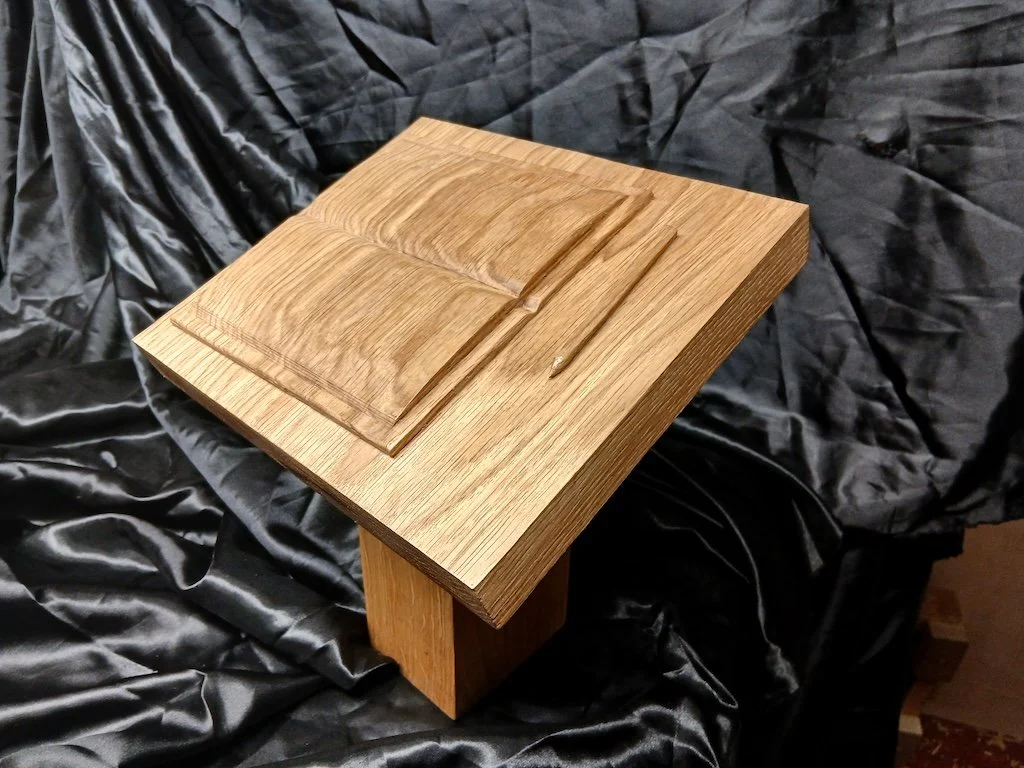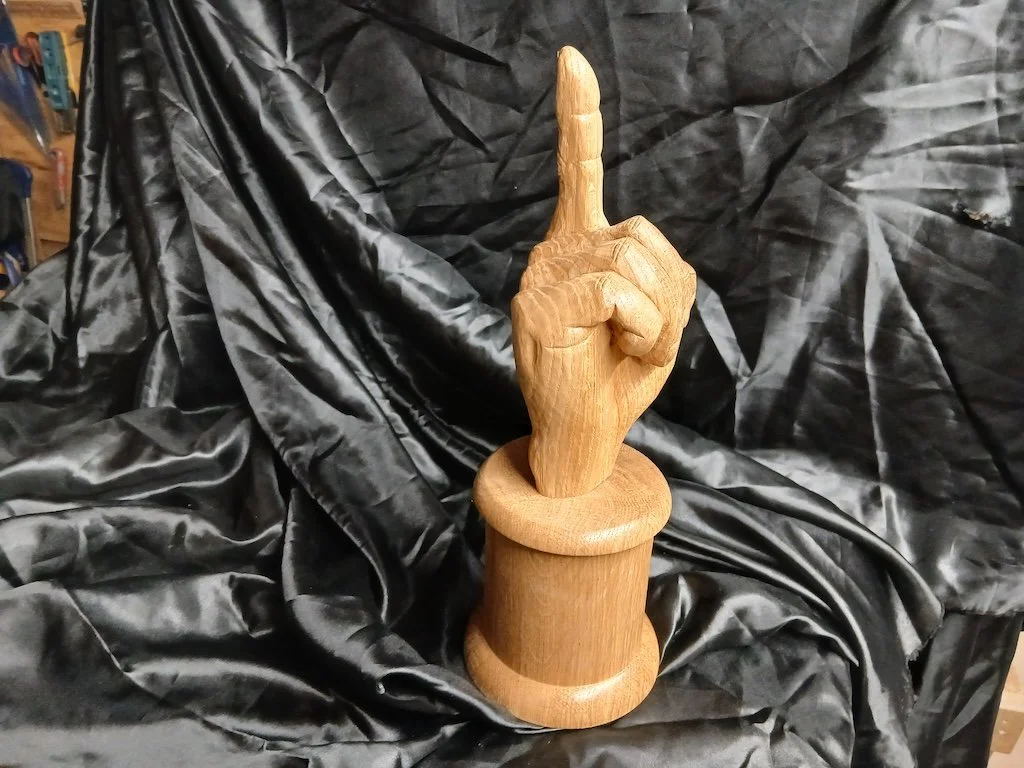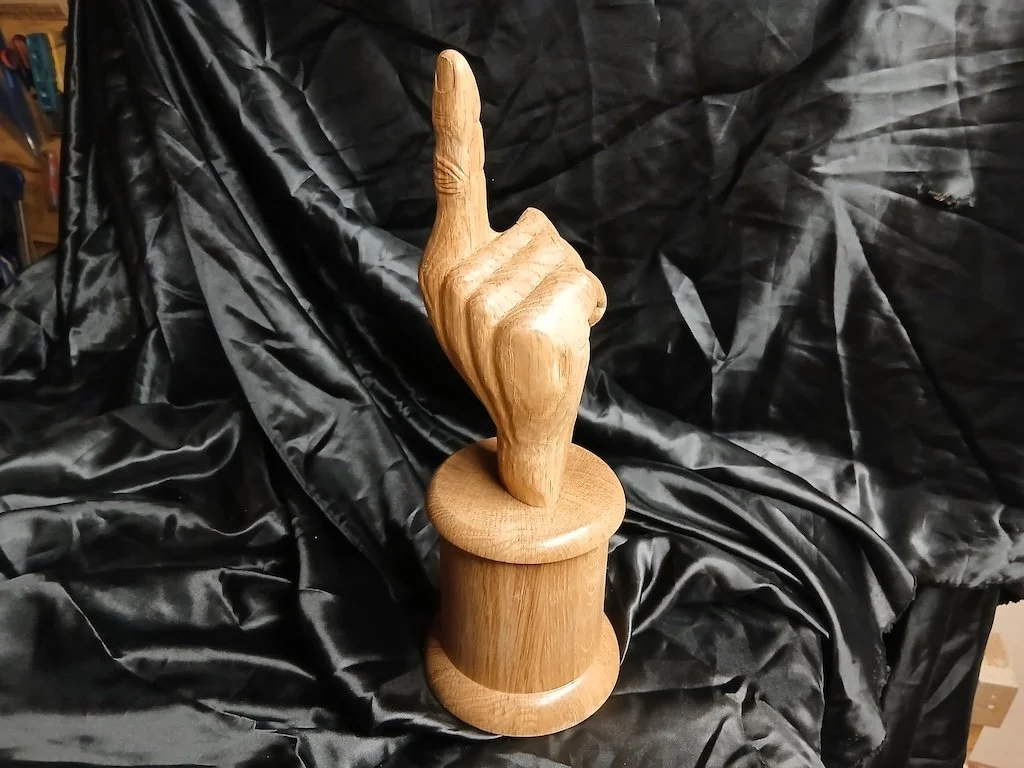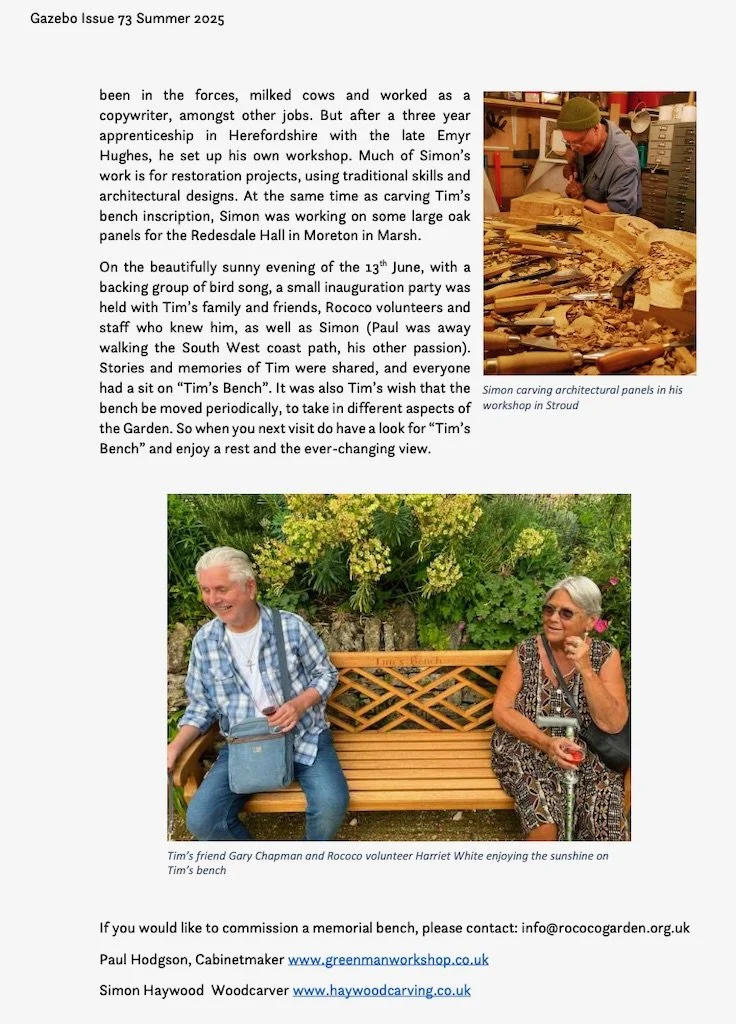Cotswolds-based Simon Haywood uses 18th-century methods to create both historic and 21st-century pieces Traditional hand carving methods and classic inspiration breathe life into Simon Haywood's work, which combines historic influences with designs for modern living.
Simon is based in the Slad Valley in the Cotswolds, where he designs and creates, repairs and restores quality decorative ornaments and architectural carvings in a variety of woods. He works on both original designs and bespoke projects based on clients' ideas.
His restoration work covers both heritage and contemporary objects, and Simon says he aims to work sensitively and truthfully to the original design. He uses traditional 18th-century methods and has worked for the National Trust as well as created designs inspired by 17th and 18th-century innovators Gibbons, Chippendale and Adams.
Simon started out working in a furniture restoration business in Hampshire. In 1997 he moved to the Cotswolds with his young family, and contacted master carver Emyr Hughes to ask if he would take on an apprentice. 'I am eternally grateful to Emyr, who welcomed me into his workshop at Staunton,' he says. 'He was a gifted and patient teacher, and I was able to learn and work while being the primary carer to our two sons.' Emyr's son Dafydd also helped train Simon, and he became proficient in mouldings, frieze carvings and hand-carved incised lettering. The first complete piece he made was a Regency kitkat mirror with an egg and dart moulding, ornamental flowers and sausage and berry mouldings on the inner frame.
Simon loves working with a variety of woods, including oak, lime, mahogany, tulip, pine, fruit woods and elm, and counts 18th-century furniture makers, designers and architects such as the aforementioned Gibbons, Chippendale and Adams among his key inspirations. 'I am primarily an architectural woodcarver and I still get excited emulating their designs now,' he says. 'Artistry is a very important part of the process, and as I have grown more confident, I not only replicate designs but create my own based on different trends and the shared vision with my clients. A visit to the Grinling Gibbons exhibition in 1998 at the V&Awasa remarkable experience and I am still in awe of his work when I visit Petworth, for example.'
Nature is another big inspiration. 'I really enjoy creating natural forms where you can bring something to life in the carving, but I also relish carving new concepts. I love the challenge and majesty of oak, the smooth gentleness of tulip, and the ease of carving pine - particularly how it feels and the aroma of the resin,' Simon says.




















